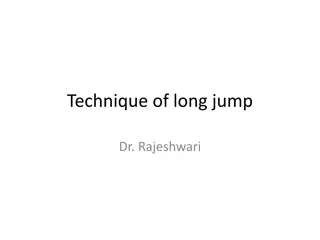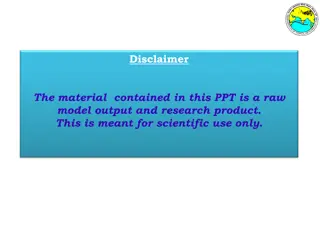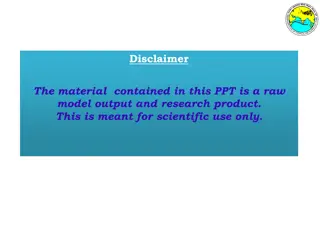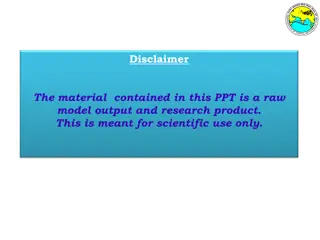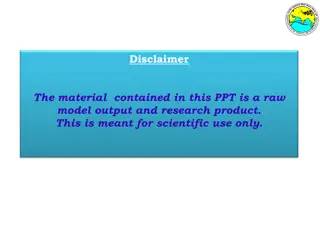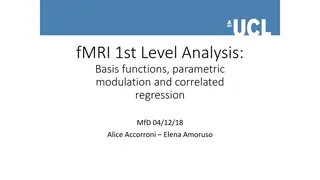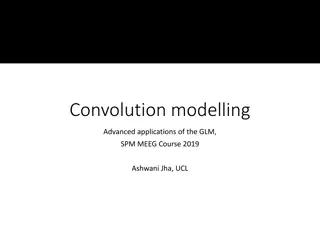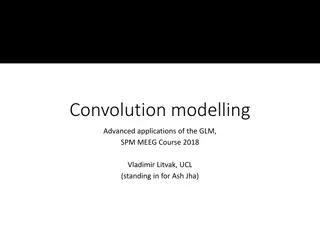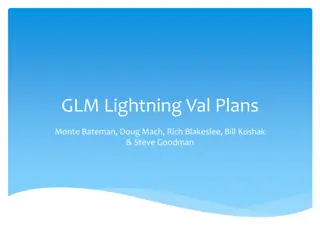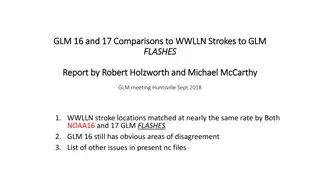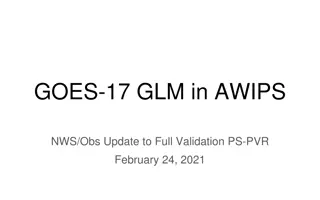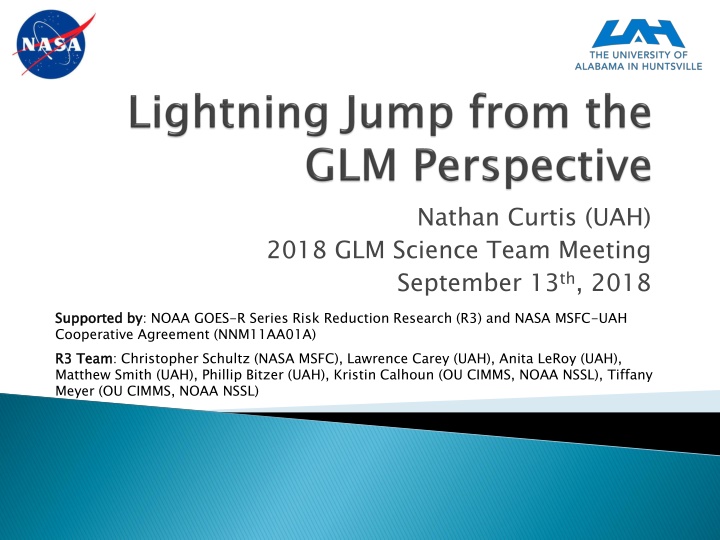
Lightning and Severe Weather Patterns with GLM Data
Explore the correlation between total lightning and severe weather events with the Lightning Jump Algorithm (LJA) using GLM flash properties. The study evaluates the utility of LJA in predicting storm behavior based on lightning activity and other criteria.
Download Presentation

Please find below an Image/Link to download the presentation.
The content on the website is provided AS IS for your information and personal use only. It may not be sold, licensed, or shared on other websites without obtaining consent from the author. If you encounter any issues during the download, it is possible that the publisher has removed the file from their server.
You are allowed to download the files provided on this website for personal or commercial use, subject to the condition that they are used lawfully. All files are the property of their respective owners.
The content on the website is provided AS IS for your information and personal use only. It may not be sold, licensed, or shared on other websites without obtaining consent from the author.
E N D
Presentation Transcript
Nathan Curtis (UAH) 2018 GLM Science Team Meeting September 13th, 2018 Supported by Cooperative Agreement (NNM11AA01A) R3 Team Matthew Smith (UAH), Phillip Bitzer (UAH), Kristin Calhoun (OU CIMMS, NOAA NSSL), Tiffany Meyer (OU CIMMS, NOAA NSSL) Supported by: NOAA GOES-R Series Risk Reduction Research (R3) and NASA MSFC-UAH R3 Team: Christopher Schultz (NASA MSFC), Lawrence Carey (UAH), Anita LeRoy (UAH),
Relationship between total lightning and severe studied since 1980 s In last decade lightning jump algorithm (LJA) developed using Lightning Mapping Array (LMA) to support decision making Goal of this project is to adapt and utilize LJA with GLM flash and/or sub-flash properties to remove constraint of being in LMA domain Figure from Goodman et al. 2013
Current LJA triggers a jump when following criteria are met: 2 standard deviation (sigma) increase in total lightning during last 12 minutes Total flash count of at least 10 flashes per minute Storm Report Verification: Schultz et al. (2009) showed POD of 87% and FAR of 33% for 107 storms Schultz et al. (2011) showed POD of 79% and FAR of 36% for 711 storms Schultz et al. (2016) using automated tracking and GLM proxy data showed POD of 60% and FAR of 73% (alt. verification POD 65%, FAR 63%) for 735 storms Radar Verification: Jumps were correlated to an increase in peak updraft speed and increases in 10 ms-1 updraft volume (Schultz et al. 2015,2017) Figure from E. Schultz et al. 2016
First step in evaluating utility of LJA with GLM was to look at few cases in depth comparing how original algorithm worked between LMA and GLM flashes 5 storms are isolated supercells, 2 storms are linear April 22nd, 2017 2 semi-isolated supercells in N. Alabama May 8th, 2017 isolated supercell in Colorado May 17th, 2017 two linear storms in central Oklahoma May 15th , 2018* supercell in Texas Panhandle June 13th, 2018* - isolated supercell in Colorado One supercell and one linear storm shown herein
GLM data used for this portion of study was Lockheed Martin reprocessed days from GLM Cal/Val field campaign in 2017 *Two storms from 2018 using live feed on GOES-R portal LMA data was taken from the Colorado LMA, North Alabama LMA, Oklahoma LMA, and West Texas LMA LMA flashes clustered using WDSS-II using: 10 sources minimum 6 stations minimum Radar data was taken from WSR-88D s Environmental data was taken from RAP model. All data was gridded within WDSS-II to 1km x 1km x 1km boxes up to a height of 19km
Cell tracking was done using automated method called VILFRD developed by Schultz et al. (2016) ??? 45 1 + ????5 45 ?????? = 100 ? 1
Very little agreement between GLM and LMA in flash rates, trends, and jump times. Increased number of GLM jumps without matching radar intensity increase.
Fairly good agreement between LMA and GLM in flash rates and trends, yet still little agreement in jump times
Times when there is fairly good agreement between LMA and GLM in flash rates, but often large differences. Even when relatively good agreement in flash rate, still differences in number of jumps and timing of jumps. Overall GLM tended to be much more jumpy than LMA and showed a lot of examples where there was a jump but no increase in radar intensity metrics Results suggest a larger sample size study to determine utility of the original LJA criteria with GLM flashes And to consider optimization of LJA criteria using GLM
10 of the 11 Lockheed Martin reprocessed days during the GLM Cal/Val 2017 field campaign are used No LMA data is used in this study. All other methodology used is the same as in the deep dive cases mentioned earlier. Domain:
930 total storms sampled Storm report verification, 45 minute warning after each jump, reports binned in 6 minute intervals. For original 2 sigma, min. 10 flashes per minute LJA criteria Hits = 274, Misses = 128, False Alarms, 1528 POD = 68% FAR = 85% CSI = 0.14 Sensitivity testing done to see if there is a combination of criteria that works better with GLM Sigma ranged from 1.0 to 4.0 by 0.1 Min flashes per minute ranged from 0 to 25 by 1
Figure from Schultz et al. (2016) Similar trends in the two studies when altering flash rates and sigma-levels Reduction in sigma increases POD without much increase in FAR Results suggest more false jumps in the LJA than in LMA
More in depth radar verification on the current large sample size study dataset Looking at properties other than flashes. Optical Energy Flash Area Groups Moving from VILFRD to a GLM only tracking algorithm Determining role of possible increased optical radiance extinction on GLM vs. LMA flash rate and jump differences due to increased presence of cloud water, ice, and hail in a storm using polarmetric radar data Also look at storm size and morphology properties




